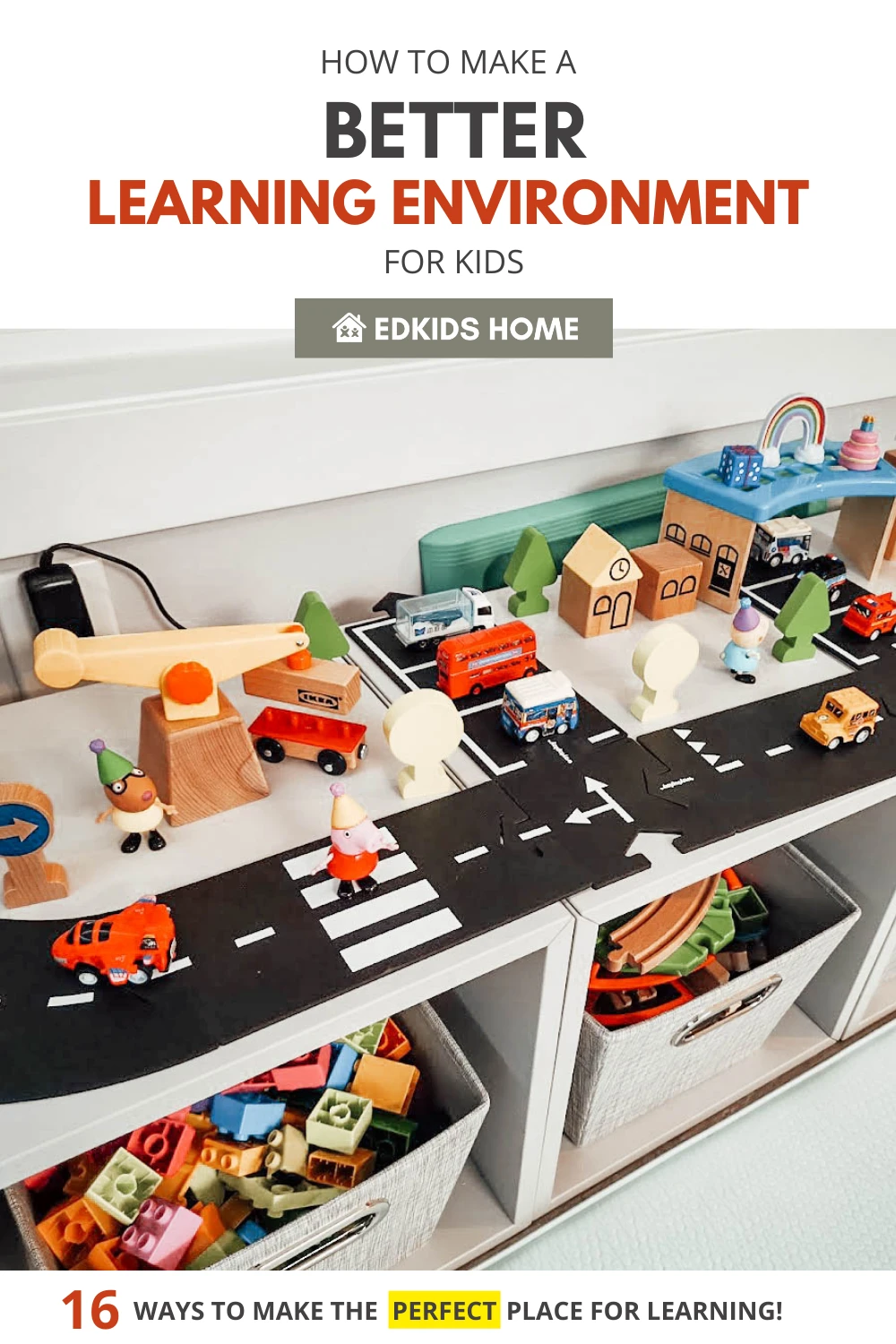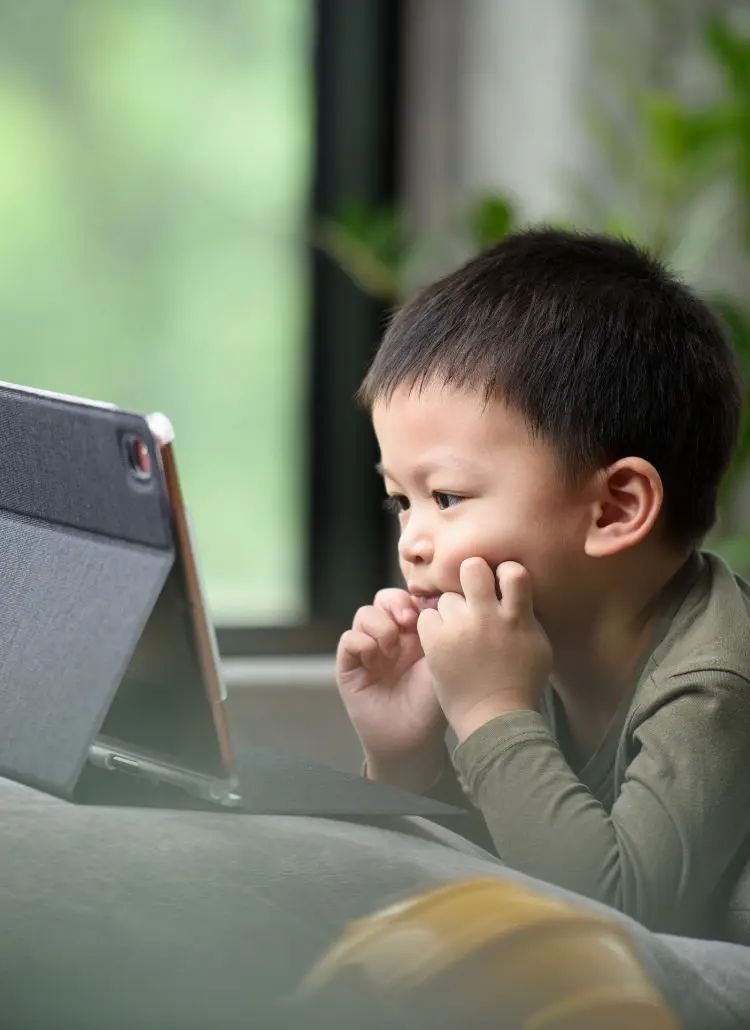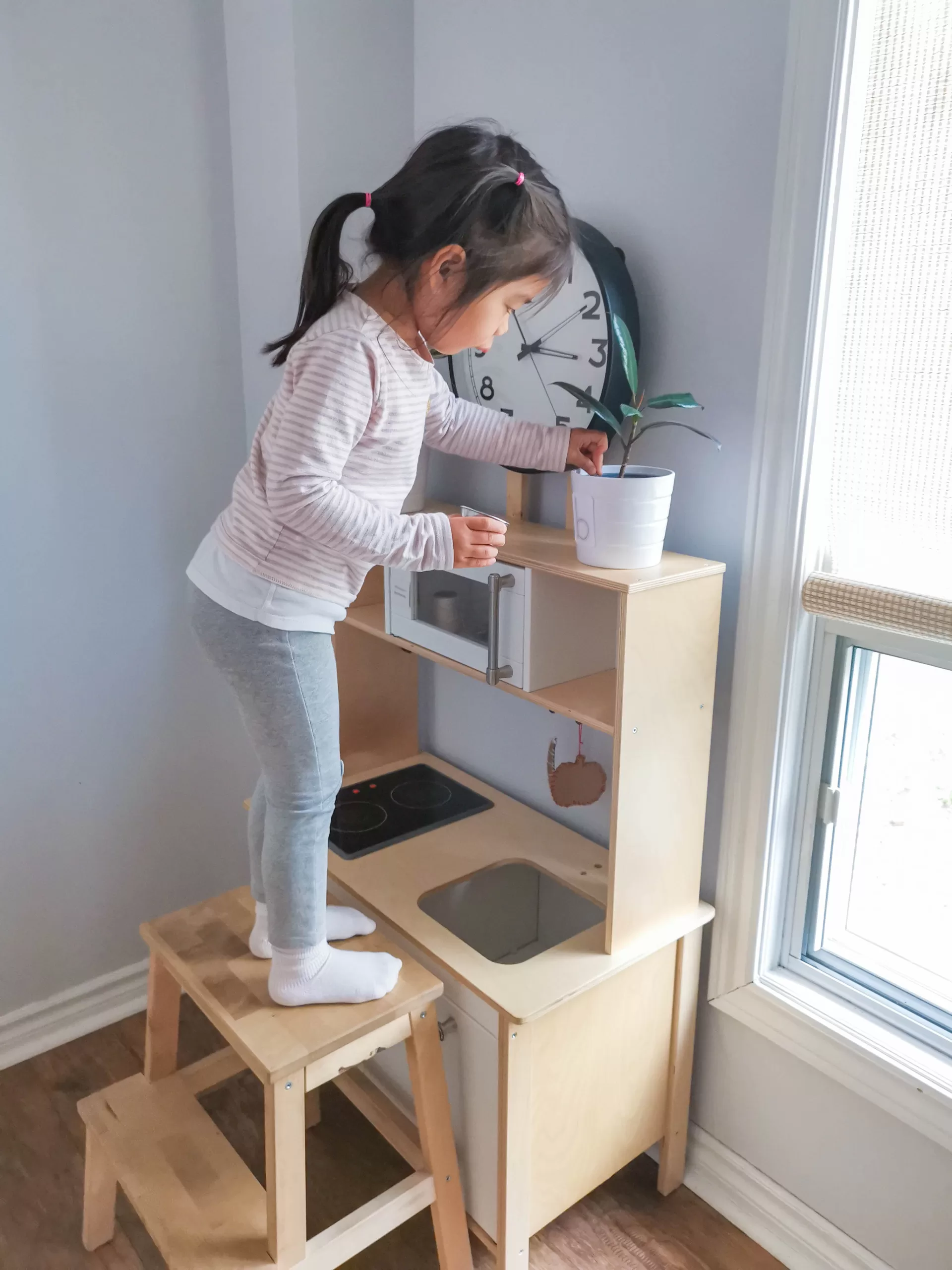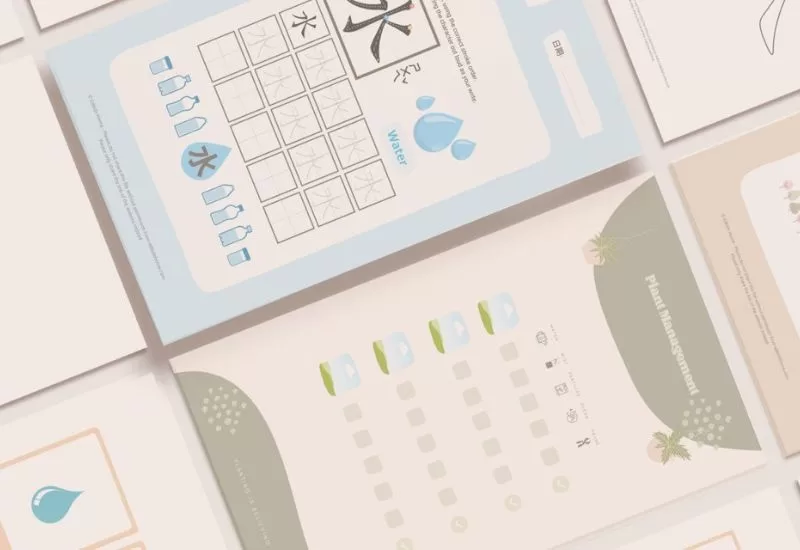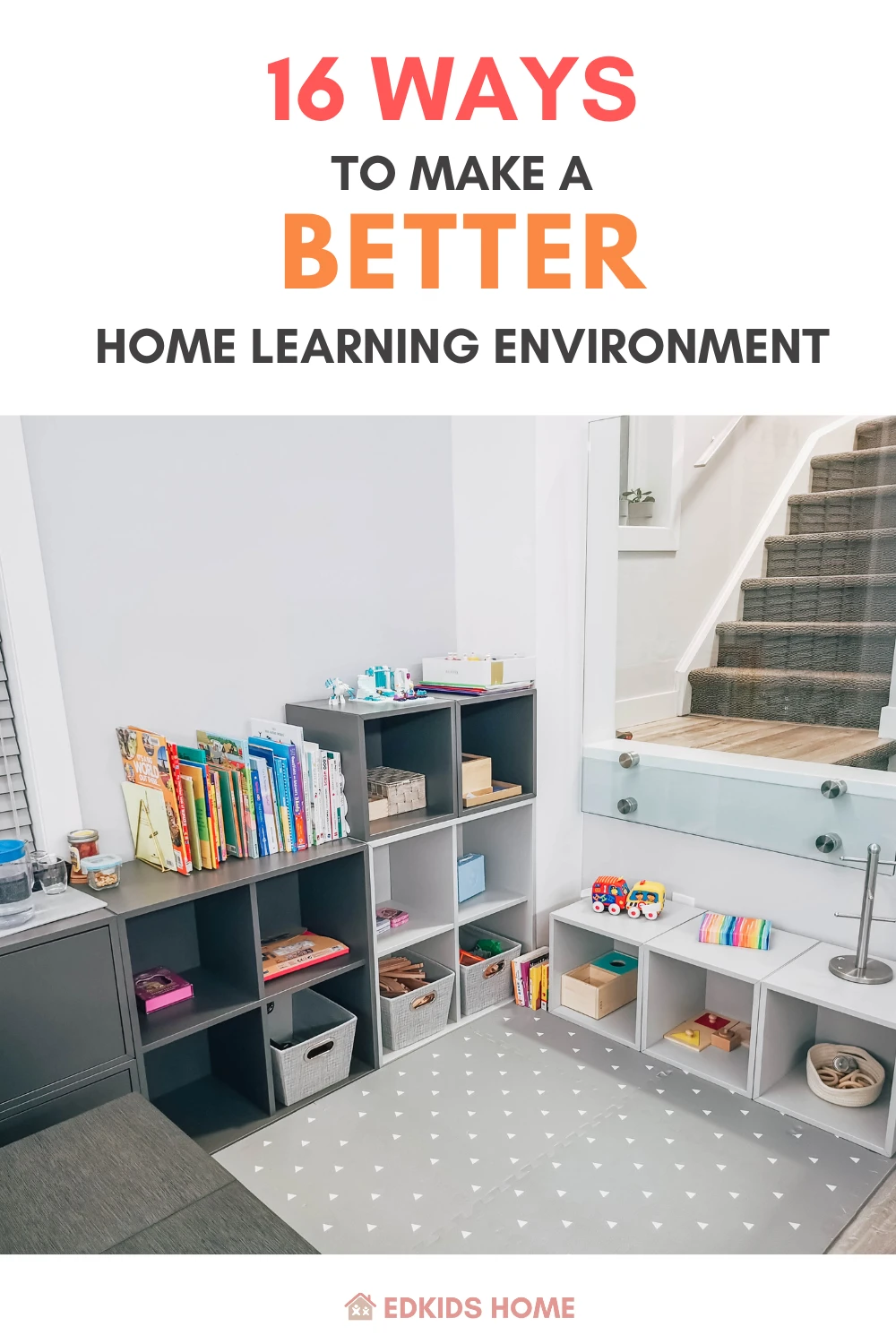
When my daughter was born, I did not know much about creating a positive home learning environment. There were more than enough toys lying around throughout the house, and they overstimulated her. The TV was on constantly, making unnecessary noise throughout the day.
The Home Learning Environment (HLE) is the physical home and the interactions in and around the home which implicitly and explicitly support a child's learning
HM Government
Finally, we were able to move into a new home around the time my son was born. I was motivated to learn how to create a learning environment in our new home. I then saw significant improvement in my daughter's behaviors, such as self-regulation, independence, love for learning, etc. I am so grateful I can do the same for my son who seems to be much easier to handle now that I have a suitable environment for him.
Why Is It Important to Have a Good Home Learning Environment?
As parents, we are our children’s first teachers. Therefore, our home is our children’s first classroom.
Why is creating a positive home learning environment so critical? Because it is the core foundation of our children’s healthy brain development.
It also encourages our children to have positive attitudes in learning and confidence in themselves.
My goal is to make things simple yet attractive for my children and allow them to explore and learn.
The discoveries within a prepared learning environment at home to build wonder and a love of learning for children. Hence, you don’t need to direct them to explore the environment.
The home environment can directly impact children's ability to control or direct their attention, thoughts, emotions, and actions in childhood1
After moving into our new home, I got excited and set up the home learning environment for my children.
Our primary learning station is in the living room, an open area connected to our kitchen.
We also have learning stations in the bedrooms, the basement, and the living room.
Cooking is also easier for me when my children are both occupied and able to play, learn, or read independently.
It has such a significant impact on them.
Crowded and inadequate housing increases tension, punitive punishment, aggression, and conflict within the household, which can lead to increased psychosocial stress in children and poor sleep quality2. It is also important to provide a tidy, quiet, and calm home environment for the development of self-regulation in children1.
I can’t say that my home is always tidy and minimalistic. It does get messy from time to time. But It feels nice to have a minimalistic home because it is more appealing.
Best of all, it’s much easier to clean. It even helps children’s concentration by reducing clutter. Ultimately, everyone in our household feels calmer in a Zen learning environment at home.
What Are the 3 Types of Home Learning Environments?

What can you do to enhance learning at home? Before we dive into that, let’s look at the three home learning environment categories:
1. Physical
- Creates the overall design and structure of your learning environment at home
2. Psychological
- “Covers psychological and social factors that have consequences for satisfaction, health, and ability to perform at the place of study”3
3. Emotional
- Promotes emotional well-being and provides stability for your children according to their individual needs
- Provides our children with emotional support to understand their feelings and show empathy.
You can read more about these three types of home learning environments in this article from WGU Washington.
16 Ways to Create a Rich Home Learning Environment
Creating a good home learning environment is not hard at all, but it requires a bit of effort to create a home with rich learning spaces for children.
You may already know some tips for creating an excellent home learning environment, but here are some more ideas.
1. Ensure there are Basic Needs and Safety in our Home Learning Environment
Categories: Psychological
A Home learning environment should support the basic needs of every family member. This includes having a safe home, food and water access, and a clean living space.
According to Maslow’s hierarchy of needs, the basic requirements for survival, such as food, water, clothing, sleep, and shelter, are required.
Without them, our bodies will not function. Therefore, we must meet these conditions before any others. This theory also holds true for our children.
We protect our kids by childproofing dangerous things in our home and ensuring our children stay safe when outdoors.
However, it is also important to accept our children for who they are and ensure they can trust us no matter what. Instead of ignoring their feelings, we must validate and empathize with their emotions. “I see you are so angry with your brother because he took your toy away without asking.”
2. Provide Unconditional Love, Attention, and Support in Your Home

Category: Emotional
The ARK Group and the University of Texas School of Public Health conducted research showing that unconditional love is the most important part of a child’s self-concept.
While it is important to help our children achieve and perform, providing them unconditional love is twice as important a factor in how they feel about themselves.
The Arkgroup & University of texas school of public health
We are our children’s most fantastic life guardians. Whenever they feel threatened, unsafe, bullied, or powerless, we will always have our children’s backs.
3. Make the Home Learning Environment Comfortable and Inviting

Category: Physiological
We should also provide comfortable settings for our home learning environment. This means having furniture that is the right size for our children, having enough light so they can see, and having a comfortable temperature.
To have a comfortable setting, pick an area in your home learning environment with lots of natural light.
Many studies have confirmed that natural lighting increases children’s performance, well-being, and creativity. Natural light is also conducive to learning.
4. Set up Different Learning Spaces at Home
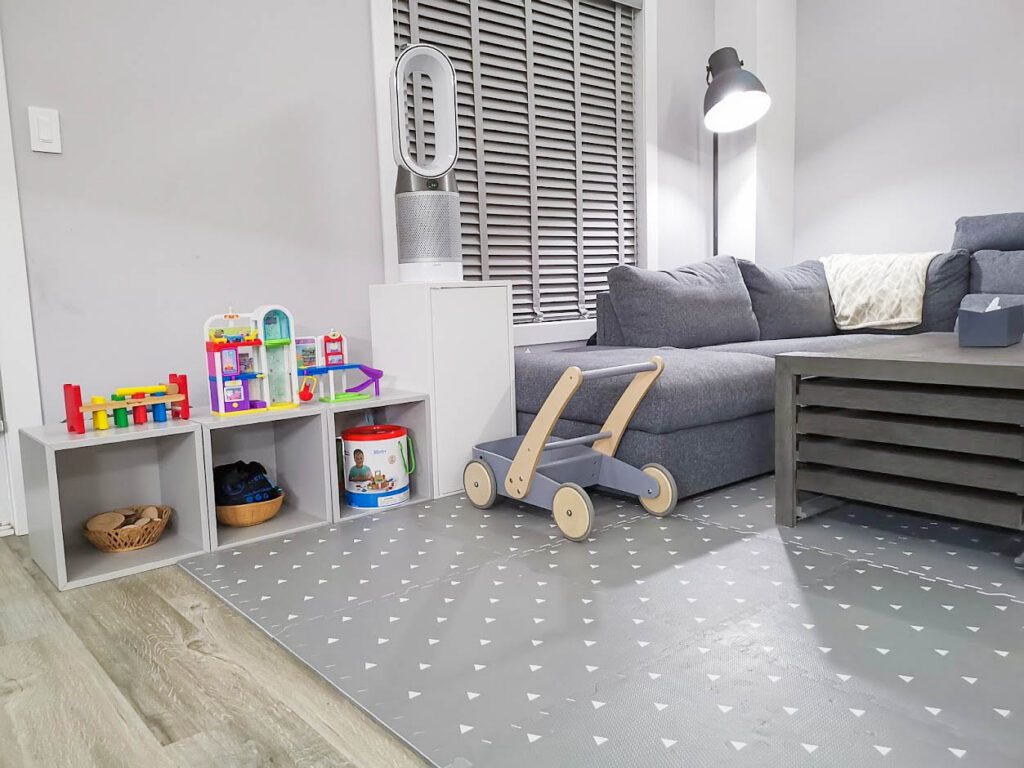
Category: Physical
The important aspect of the home learning environment is to provide different learning spaces. You can try having learning stations available in different locations such as bedrooms, playrooms, living rooms, or outdoors.
Having a separate and functional station provides greater exposure to learning.
There can be places for construction play, arts & crafts, dramatic play, musical instruments, and many more.
It is better than having all toys and equipment in one pile, which can be overwhelming for our children.
It also allows our youngsters to decide whether they are in the mood for a messy activity, a sensory activity, playing musical instruments, or reading a book.
Learn more: The Beginner's Guide to Set Up a Learning Space at Home
5. Display Books in Your Home Learning Environment

Category: Physical
Our kids receive many incredible benefits from reading. Therefore, children must have access to books in all areas where they spend their time.
We have books and bookshelves in bedrooms, the living room, and the playroom. We want to ensure reading is something they enjoy and not a chore.
You recognize that your children love to read when they voluntarily pick a book up to read by themselves or asks you to read with them.
Offer a variety of books because children are more likely to find a book they desire when they have options. These can be picture books, fiction and nonfiction books, and reference books such as dictionaries and encyclopedias.
The best way to establish a reading habit is to read a bedtime story to your children every night.
I also encourage you to read to them during the daytime. Visiting the library can also teach your children about borrowing books and returning them in good shape after they’ve been read.
Related: Sagebooks Chinese for Kids Beginner 500 Review – Is It Worth a Try?
6. Establish Routines and Schedules For the Home Learning Environment

Category: Emotional
Routines help our family run smoother and help us enjoy more time together. Our children feel more secure when they understand what to expect and can predict how their day will go.
I do not need to nag my children throughout the day when it comes to tidying up their toys because they are used to tidying up every day.
I also regularly set a time for TV after they finish dinner. Therefore, they will not keep asking for TV time throughout the day.
Related Articles:
- How to Create an Interactive Calendar for Kids
- Free Morning & Evening Routine Charts Printable
- Free Visual Weekly Planner for Kids: Take Control of Time Management
- The Ultimate House Plants Indoor Care Checklist for Kids (It’s Actually Free!).
- Encourage Good Behavior With These Free Reward Charts
7. Ensure Trust Takes Place at Home

Category: Psychological
Trust in your children. If we provide a rich home learning environment for them to explore, we don’t need to force our children to learn or compare them with other kids.
I know it’s easy to hear but hard to do, especially after a playdate when you see other kids can do things your children have not yet done.
But every kid is different! Undoubtedly, there are other things your kids can do that their kids can’t! We have to stop stressing ourselves out and stop comparing them.
We can trust that our children are growing along their unique path, on their timeline, and in their particular way.
We can trust them to learn the boundaries of their bodies for themselves.
There may be accidents that we cannot control—and maybe we should allow them to happen. After all, that is how they learn.
8. Encourage Your Child to be Independent and Self-sufficient

Category: Psychological
Please encourage your children to increase their independence. Your children know they can do the (age-appropriate) tasks for themselves.
I try to provide every opportunity for my children to do basic jobs for themselves, and I’m so joyful to see their proud faces once they have accomplished their goals.
Here are some ideas you can set up at your home to enhance their independence:
- Have a stool around to reach high countertops and sinks
- Have basic food prep utensils
- Have accessible clothing handy to dress themselves
- Give them chores
Related Articles:
- 13 Tips: How to Motivate Child to Practice Instrument
- Encourage Good Behavior With These Free Reward Charts
9. Display Educational Posters in Your Home Learning Environment

Category: Physical
A great way to set up an excellent home learning environment is to set up educational posters.
Children are visual learners, and their brains absorb visual information much faster than text.
Providing educational posters on walls can help your children’s learning process. It is an effective and convenient way for us to catch and hold our children’s attention and teach them.
Posters also help focus on specific topics, ideas, events, or processes.
I love putting simple yet aesthetic educational posters around the house!
Related:
- Free Weather Chart Activity for Preschoolers (Bilingual Chinese)
- 10 Free Chinese New Year Banner Printables (Stroke Directions)
10. Display Children's Work at Home
Category: Physical
Children often use art to express their thoughts, feelings, and ideas.
Seeing their work displayed will give them a strong sense of self and support. It also gives children a chance to think about and reflect on their past.
Every time I put my children’s work on the wall or fridge, their eyes brighten with pride. It motivates them to continue working on new projects to enhance their creativity.
11. Encourage Your Child to Do Chores
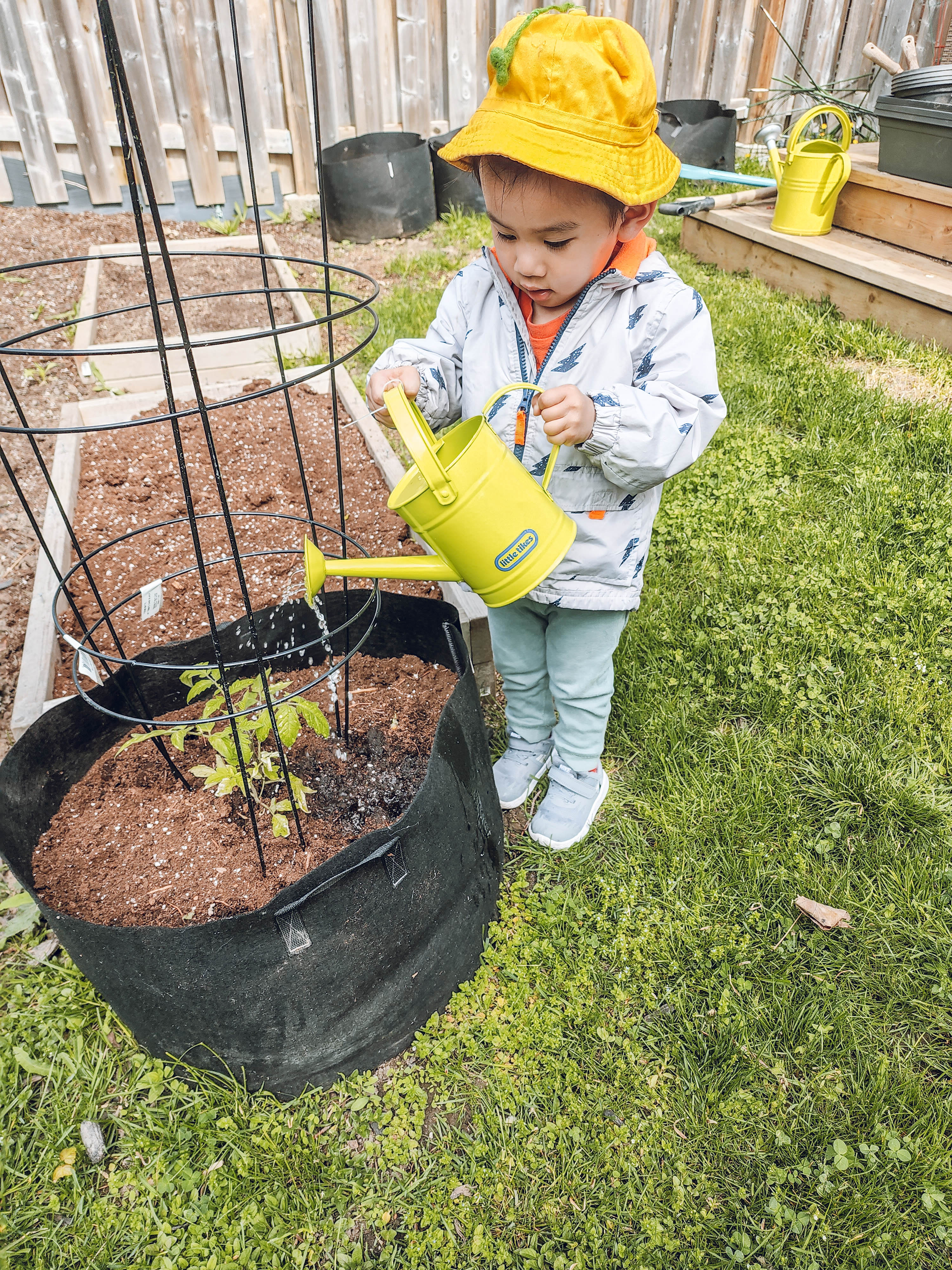
Category: Emotional
Do you notice that our young children love to help around the house? These might be chores to us, but kids love them!
Here are some of the benefits of involving our children in doing chores with us:
- Working together to create, practice, and master the activities
- Building concentration through repetition
- Enjoying feeling like a part of the family by being able to contribute
- Learning new skills and independence
- Enhancing fine motor and gross motor skills
- Exploring great sensory experiences: touch, sight, hear, smell, taste, body awareness, interception
Related Articles:
- 5 Steps in Planting a House Plant – Free Guide for Kids
- Encourage Good Behavior With These Free Reward Charts
12. Display Labels/ Signs in the Home Learning Environment
Category: Physical
Research shows that putting labels and signs around the house supports the development of literacy skills and inspires a lifelong love of reading (even if they are not reading yet!).
Here are the stages of learning to read labels/signs around your home:
1) Your children will look at the pictures and eventually discover the meaning
2) They will understand there’s a connection between the pictures and written words
3) They will become mindful that those letters under the picture represent both the object and the sounds we use to name the object
This is how their journey down the road to literacy begins.
13. Provide a Variety of Toys and Materials that are Engaging and Educational
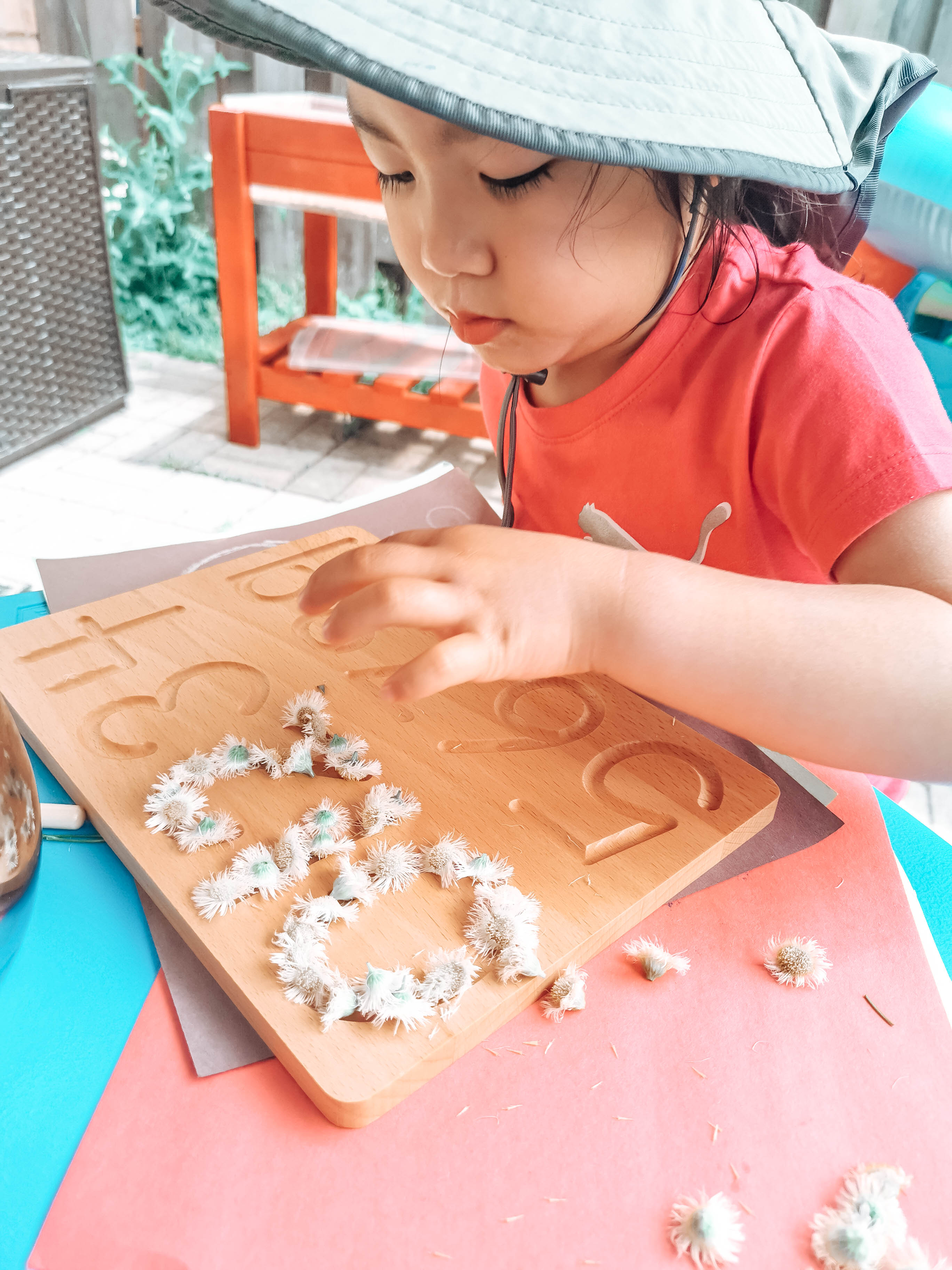
Category: Physical
Play is the highest form of research
Albert Einstein
Play is the best way for kids to learn, and as parents, we should invest in educational toys and activities for our children.
They are designed to enhance motor development, promote problem-solving, improve concentration, etc.
Flashy and chatty plastic toys may be more appealing, but they produce a lower language quantity and quality.
They are all very similar and deliver the same type of stimulation. They also limit children’s creativity, preventing children from engaging in the world around them.
Here are some suggestions for educational activities:
- Threading activities
- Posting activities
- Opening & closing activities
- Sorting activities
- Matching activities
- Mystery bag/box (your child can guess what is in the bag/box)
- Arts & crafts activities
- Flashcards
Toy Articles:
- 29 Best Educational Toys for 2 to 3-Year-Olds
- Lovevery Play Kits: What You Need To Know (Complete Review)
- 8 Best Math Toys to Help Your Child Love Learning
Activities:
14. Allow for Plenty of Outdoor Exploration in the Home Learning Environment

Category: Emotional & Psychological
Let’s try to minimize our screen times as a family and get outside as much as possible! Nature play increases our attention span, which is crucial for education.
If you want your child to thrive academically, socially, emotionally, and physically, you will have to build time for your family to spend outdoors.
“There is no such thing as bad weather, just bad clothing.”
Scandinavians
Living in Canada, our family experiences all types of weather throughout the season.
When it is winter, we make sure everyone is dressed warm, from wearing good quality under armor to snow jackets and snow pants.
My kids love to go outside during the rain with their colorful umbrellas and rain suits on.
What if you have no time to go outside? Perhaps try to improvise and set up your backyard with items that can build your child’s gross motor skills.
Here are some ideas:
- Cars and trucks with wheels
- Gardening tools
- Sandbox
- Mud kitchen
- Cardboard boxes
- Tunnels
- Tires
- Swings
15. Make Time Each Day For Your Child to Explore and Learn Freely

Category: Psychological
Children need time! It lets them follow their desire to wander, discover, and explore. This is the unscheduled time that does not feel rushed and allows them to explore, move, converse, build connections, and be curious.
Let’s ask ourselves if we can reserve 15–30 minutes of unscheduled time every day. How about an hour or two during the weekends? What commitments can we let go of to let this happen?
The pace of young children is slower than ours. They do not like anyone to rush them (except when they want to run).
Let’s let go of our mental timelines for a moment. Take a look at the ants on the ground together. Close your eyes and listen to the birds sing together.
Enjoy the process of bonding and learning together!
We will stay at a slower pace if we want their cooperation, which means trying not to say, “We are late again!” every morning.
Statements like this will stress our kids out, which leads to resistance. When we rush them every day, our children may tune out our requests when we need their help.
Instead, we can say something like, “You are still eating your breakfast, and it is time to leave. I’m going to pack your food, and you can eat it later.”
16. Teach Social and Emotional Skills in the Home Learning Environment

Category: Emotional & Psychological
It is such a joy to see our children going through the talking stages. They start with babbles, which will transition into single words, and soon they will learn to put the words together to form sentences.
Here are some tips on creating a language-rich home learning environment:
- Talk to your children throughout the day, whether bathing, walking outside, dressing up, driving, bedtime, etc.
- Extend your children’s vocabulary during playtime
- You can ask your kids questions about what they are doing and offer new words to introduce them to the concepts they discover as they play.
- “Can you tell me what color the blocks are?”
- “The train is very long. Can you push the train forward?”
- You can ask your kids questions about what they are doing and offer new words to introduce them to the concepts they discover as they play.
- Speak to your children as if you are talking to an adult to improve their vocabulary
- Describe the world around us
- Encourage your children to tell you a story of their experience
- Interpret your children’s messages
- Talk about what you are doing
Conclusion
In closing, I believe the best home learning environment at home is one that provides loving, nurturing, creative spaces for the whole family.
The 16 tips for creating a good learning home environment are:
- Ensure there are Basic Needs and Safety in our Home Learning Environment
- Provide Unconditional Love, Attention, and Support in Your Home
- Make the Home Learning Environment Comfortable and Inviting
- Set up Different Learning Spaces at Home
- Display Books in Your Home Learning Environment
- Establish Routines and Schedules For the Home Learning Environment
- Ensure Trust Takes Place at Home
- Encourage Your Child to be Independent and Self-sufficient
- Display Educational Posters in Your Home Learning Environment
- Display Children's Work at Home
- Encourage Your Child to Do Chores
- Display Labels/ Signs in the Home Learning Environment
- Provide a Variety of Toys and Materials that are Engaging and Educational
- Allow for Plenty of Outdoor Exploration in the Home Learning Environment
- Make Time Each Day For Your Child to Explore and Learn Freely
- Teach Social and Emotional Skills in the Home Learning Environment
I am not the “perfect” parent, and I am still exploring how to improve our home learning environment. Hopefully, you can join me on this journey to create a good learning environment at home for our kids.
